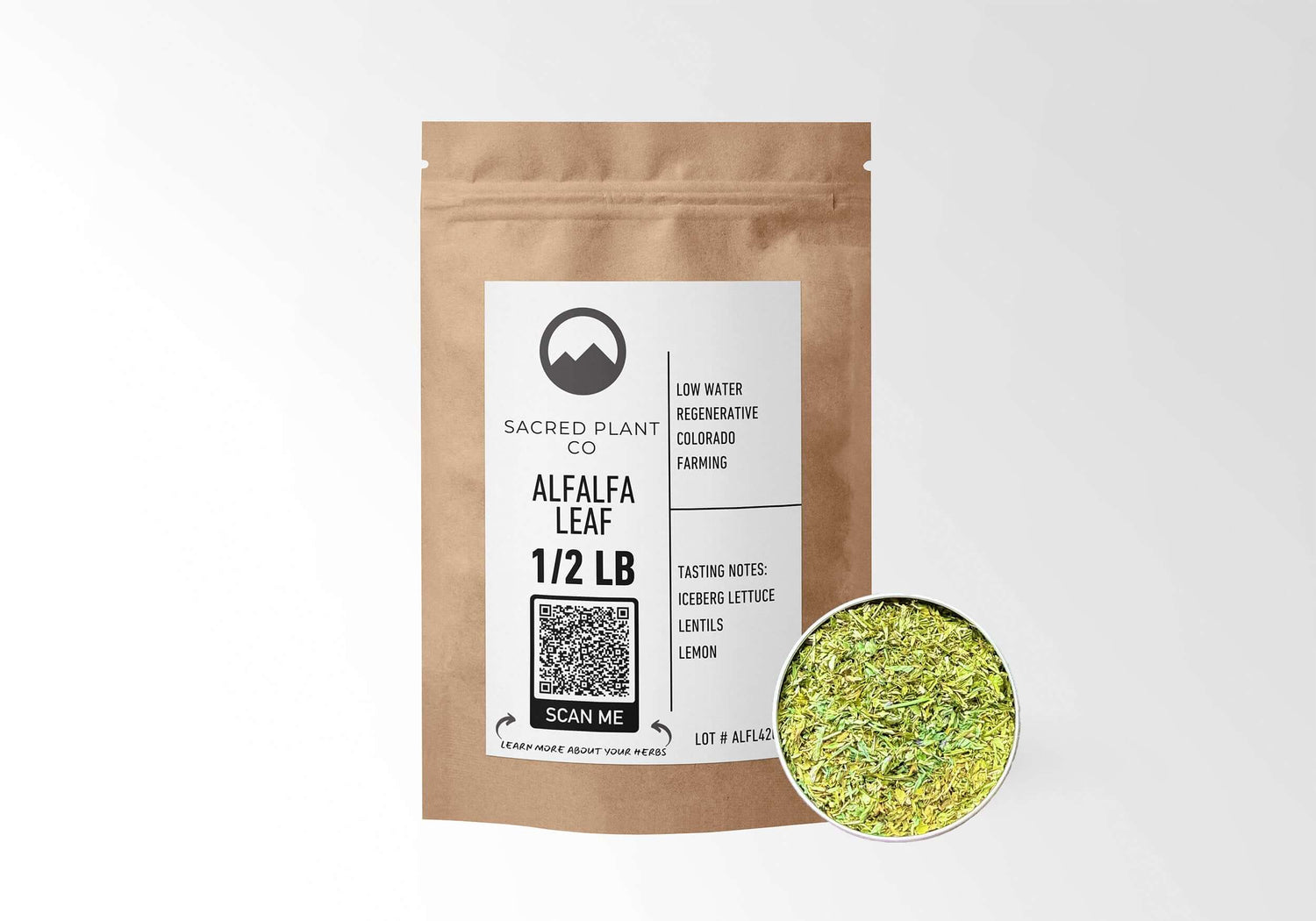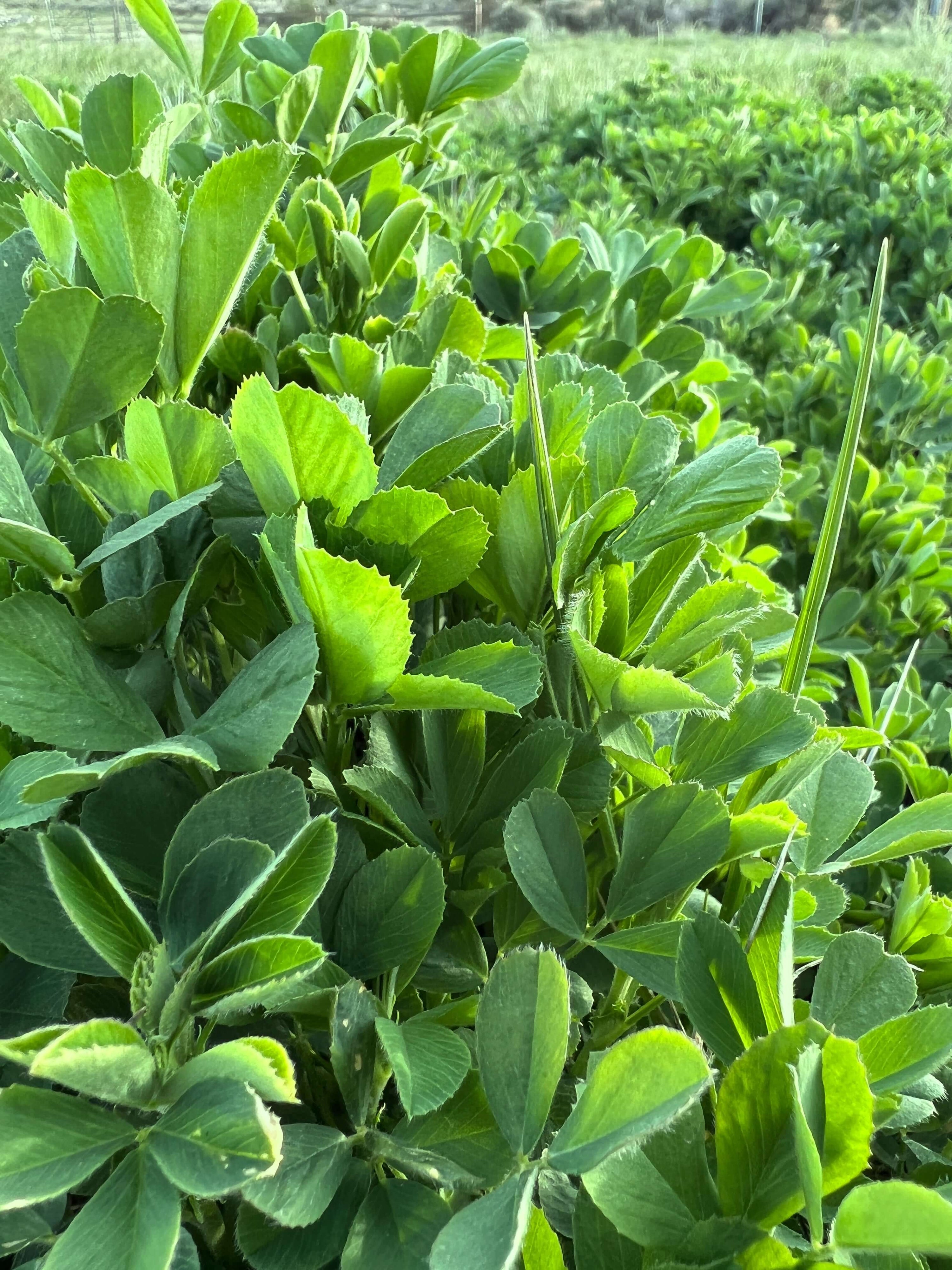Alfalfa Leaf Tea: Brew Science, Flavor Pairings & Iron-Absorption Strategy
Hot vs. cool infusions • Tannin control • Vitamin-C pairing for plant iron • Timing tips • Safety • FAQ
Quick takeaway: Use **hot water** for a brisk, more astringent cup—or **cool infusions** for a smoother profile. Add **lemon (vitamin C)** to support non-heme iron absorption when you’re eating plant-forward meals, and time your tea away from iron-dense dishes if iron status is a concern. :contentReference[oaicite:0]{index=0}
What alfalfa leaf is (and why brew method matters)

Alfalfa leaf (Medicago sativa) delivers a **light, meadow-green** cup with gentle herbal notes. Like many botanicals, its **polyphenols** are sensitive to **time** and **temperature**. In general, **hot water extracts more polyphenols and tannins**—bigger flavor, but also more astringency—while **cool infusions** yield a rounder, softer profile. Data from tea science (Camellia) consistently shows this extraction pattern; it’s a reasonable guide for leafy herbal infusions too. :contentReference[oaicite:1]{index=1}
Brew science: hot vs. cool (how to tune tannins)
Hot infusion (brisk & structured)
- Measure: 1–2 tsp leaf per 8 oz water.
- Water: just off the boil.
- Steep covered: 6–8 minutes for balance (longer = more tannin).
- Finish: sip as-is, or soften with lemon + a touch of honey.
Cool/room-temperature infusion (smoother, less tannic)
- Measure: 1–1.5 tbsp per 12 oz room-temp water.
- Time: 30–60 minutes at room temp (or 2–4 hours refrigerated).
- Strain: brighten with lemon juice; add mint for lift.
Why this works: cooler water extracts **fewer bitter polyphenols** and yields a naturally gentler cup, a pattern widely reported in tea extraction studies. We’re borrowing that brew logic here for alfalfa leaf. :contentReference[oaicite:2]{index=2}
Iron-savvy strategy: vitamin C + timing
Plant (non-heme) iron is finicky. **Tannins** and related polyphenols can **bind iron** and make it harder to absorb; **vitamin C** has the opposite effect—it **enhances non-heme iron absorption** and can counter some inhibitors in meals. Practically, you have two choices: (1) drink alfalfa tea **away from** iron-rich plant meals, or (2) add **vitamin C** (e.g., lemon) to the meal or cup. :contentReference[oaicite:3]{index=3}
- When iron matters: include lemon (or other vitamin-C foods) with greens/legumes, or enjoy tea between meals. :contentReference[oaicite:4]{index=4}
- Tea timing tip: very large intakes of tannin-rich tea with meals can depress iron status over time—moderation and timing help. :contentReference[oaicite:5]{index=5}
House recipe: Iron-Savvy Alfalfa–Mint Citrus (hot version)
Ingredients: 1–2 tsp alfalfa leaf (cut & sifted), 8 oz hot water, 4–6 mint leaves (optional), 1 tsp fresh lemon juice, honey to taste.
Directions: Cover and steep 6–8 minutes; strain; add lemon and honey. (Add lemon after brewing to preserve the fresh citrus top-notes.)
Cool-infusion variant: Use the cool method above; stir in lemon before serving. Both versions pair vitamin C with your plant-forward meals. :contentReference[oaicite:6]{index=6}
Troubleshooting & flavor matrix
- Too bitter/astringent? Shorten the steep, switch to a cool infusion, or add lemon + a touch of honey.
- Too thin? Slightly increase leaf or extend steep by 1–2 minutes (hot); extend infusion time (cool).
- Flat flavor? Add 1–2 strips citrus peel during the last minute (hot) or the last 10 minutes (cool); or blend 70% alfalfa, 20% mint, 10% lemon peel.
Safety, vitamin K, and sprouts vs. leaf
- Vitamin K & warfarin: Alfalfa contains vitamin K; if you use **warfarin**, keep vitamin K intake consistent and coordinate with your clinician. :contentReference[oaicite:7]{index=7}
- Sprouts/seeds vs. leaf: This article covers **leaf tea**. **Alfalfa sprouts/seeds** contain **L-canavanine** and have been linked to lupus-like flares; those with autoimmune conditions are often advised to avoid **sprouts**. :contentReference[oaicite:8]{index=8}
Educational notice: For information only; not medical advice. Consult a qualified professional for personal guidance.
Alfalfa Leaf Tea — FAQ
Hot brew or cool infusion?
Hot = bigger flavor and more tannin; cool = smoother, less astringent. Choose based on your palate and why you’re drinking it. :contentReference[oaicite:9]{index=9}
Can lemon actually help with plant iron?
Yes—vitamin C enhances non-heme iron absorption in humans. Add it to iron-rich meals or to your cup after brewing. :contentReference[oaicite:10]{index=10}
Should I avoid tea with iron-rich plant meals?
Tannins can reduce non-heme iron absorption; either drink tea away from those meals or include vitamin C to offset inhibitors. :contentReference[oaicite:11]{index=11}
Is alfalfa leaf safe with warfarin?
Because it contains vitamin K, keep intake consistent and talk to your clinician. :contentReference[oaicite:12]{index=12}
Is leaf tea the same as sprouts?
No—sprouts/seeds are different and have been linked to lupus-like flares due to L-canavanine; this guide focuses on leaf tea. :contentReference[oaicite:13]{index=13}





